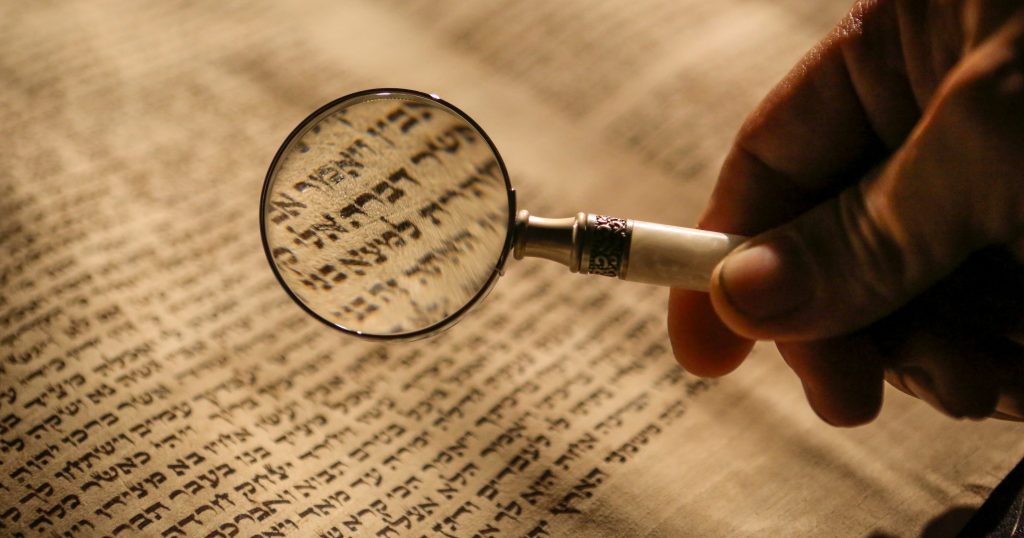Yiddish: Can You Understand It? Posted by Sten on Apr 23, 2020 in Culture, Language, Traditions
Perhaps you have seen the Serie (show) Unorthodox on Netflix. When the first words were spoken, I heard a strange familiarity, yet only recognized certain words. Yiddish is a mix of different languages, with unmistakable German roots. What’s the story of this interesting language? And how is it expressed in Unorthodox? Let’s find out!
What is Yiddish?
Yiddish is an interesting language. It comes in a variety of forms1There is Eastern and Western Yiddish, and each is further subdivided into Southeastern, Mideastern, Northeastern, Southwestern, Midwestern and Northwestern Yiddish., but originally combined elements of Hebrew, Slavic and Roman languages and predominantly German. In fact, Yiddish is short for Yidish Taitsh (Yiddish German). And you can hear it, as it sounds like a difficult German dialect. Yiddish finds its origins in the 9th century, and so through centuries it developed into a distinct language, which propelled a distinct, vibrant culture. By the early 20th century, Yiddish was spoken by about 12 million people in Europe, predominantly in Eastern Europe.
However, its tight relationship to German took a dark turn when the Nazis came to power. Their goal was to completely eliminate the Jewish people and their culture. Out of the 6 million Jews that were killed in the Holocaust, 85% spoke Yiddish. With post-war emigration to Israel, the use of Yiddish further declined. Today, there are only about 2 million speakers left – but this is a growing number!
The fact that German speakers can so easily learn Yiddish could be seen as bittere Ironie (bitter irony), as Dirk Schümer wrote for Welt.
Examples of Yiddish in Unorthodox
https://youtu.be/-zVhRId0BTw?t=20
The German-produced Netflix miniseries Unorthodox uses Yiddish a lot over its 4 episodes. Especially when the Williamsburg habitants converse, there is nothing but Yiddish. But can we make something of it, even without subtitles?
The community displayed in the show is the so-called Satmar community, named after the Hungarian city where it has its roots. These Hasidic Jews also speak their own version of Yiddish, of course. Since the community settled down in Williamsburg, New York, there are many English influences as well, which we can clearly hear (“phone”, for example). Let’s look at some of the Yiddish from the trailer.
Since I don’t know how to spell Yiddish – especially not in its Hebrew alphabet – I’ll go with the English translation and explain the sounds, and how they remind me of German.
“- The Matchmaker made a suggestion. – What’s the boy like?”
The first sentence rings no bells. However, the second sounds like “Was für ein Bube ist er?” (What kind of boy is he?). But without that subtitle, I’d have no idea.
“He is like everyone else. Normal”
Again, this sounds like: Er ist wie jedem einen. Gehörig. That first part makes little sense, but gehörig means “proper”, so the meaning of being “normal” isn’t too far off.
“- I’m different from the other girls. – Different is good.”
Sounds very familiar, and I could understand the whole thing. It sounds like “Ich bin anders als die anderen Mädle” and “Anders ist gut”. Though the “good” sounds more like the English word than the German.
“It’s your duty to uphold God’s wishes.”
This one is a mixed bag. I can understand the first part: “Es ist deine heilige Pflicht” – It is your holy duty. But what comes after… I have no clue.
“We have to make a family, whether that appeals to you or not!”
The first part, nothing. The second part, however, sounds like a common phrase in German: “Ob es dir gefällt, oder nicht!” (Whether you like it or not!).
“Grandma? I don’t know what to do.”
Bubbe is the Yiddish word for Grandmother. After that, it sounds German-like with “Ich weiß, nicht was zu tun ist”. This could literally be translated in English to “I don’t know what to do”. Yet in German, we’d say “ich weiß nicht, was ich tun soll” (“I don’t know what I should do”) in a case like t his.
“Even if we find Esty in this city, how do we know she’ll come back?”
This one is hard to understand, but there are parts I could understand. “In this city” sounds like the German in dieser Stadt. The second part of the sentence sounds like “Wie du weißt, sie wird zurückkommen?”. While a German would understand this, it follows a different sentence structure. In German, we’d say “Wie weißt du, dass sie zurückkommen wird?” It appears that Yiddish does not invert the direct verb, like in German (wie du weißt vs. wie weißt du and sie wird zurückkommen vs. sie zurückkommen wird).
That different sentence structure can also be seen in usage of past tenses. Here’s another example:
When listening to this woman, you can hear, for example, “Ich bin gekommen nach Oklahoma City” (I came to Oklahoma City). In German, you’d say “Ich kam nach Oklahoma City, or even Ich bin nach Oklahoma City gekommen.” Verb placement in Yiddish seems to work a bit differently than in German.
How different do Yiddish and German sound?
Also, there is a great direct comparison between German and Yiddish in the video above. The English sentence is given in German and Yiddish. Can you recognize similarities and differences?
Yiddish today
While Yiddish is not much spoken anymore in Europe, it is still alive in the United States. In communities like the Satmar in Williamsburg, but also in less orthodox circles, such as the National Yiddish Book Center in Amherst, Massachusetts. It contains centuries of Yiddish cultural history. Or what about The Jungle Book in Yiddish? With the Spielberg Digital Yiddish Library, you can read it. If you can read the Hebrew alphabet, that is.
There are plenty of ways to learn Yiddish online, also in German!
Have you heard Yiddish before? Can you understand it? What do you think about the language? Let me know in the comments below!
- 1There is Eastern and Western Yiddish, and each is further subdivided into Southeastern, Mideastern, Northeastern, Southwestern, Midwestern and Northwestern Yiddish.

Build vocabulary, practice pronunciation, and more with Transparent Language Online. Available anytime, anywhere, on any device.






Comments:
mjk63:
The sentence “The fact that German speakers can so easily learn German…” should that be “…can so easily learn Yiddish…”? Great post.
Sten:
@mjk63 Corrected it. Thanks for catching that!